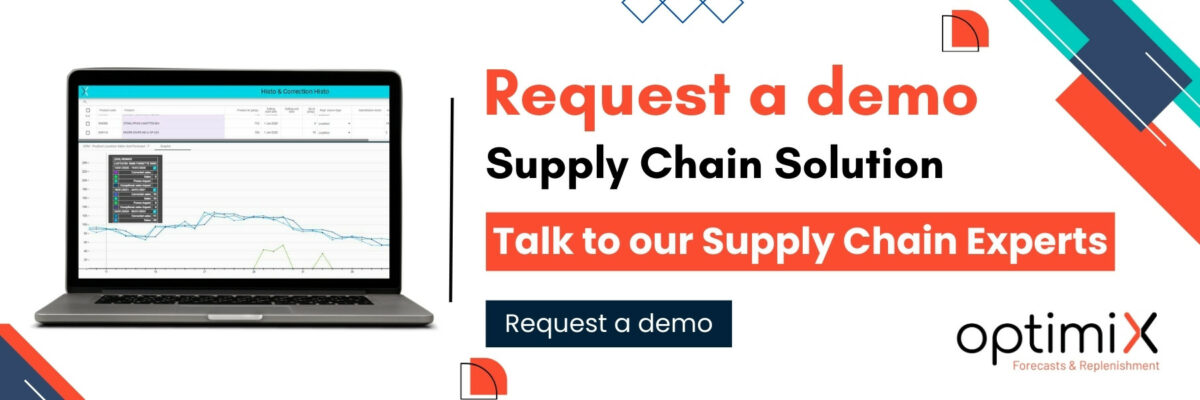In the dynamic world of retail, finding the right balance between maximizing profits and maintaining a positive brand image is a complex challenge. Yield management is a practice that has intensified in recent years with the development of digital technology, technological advances and massive data processing (Big Data). This sales strategy enables us to adjust prices in line with changes in consumer buying behavior.
In this article, we take a closer look at what yield management can do for retailers.
Exploring the two variants of yield management
The Yield management has two main variants:
- bottom-up yield management,
- dynamic yield management.
These two approaches offer companies flexible methods for adjusting prices to market demand, and thus optimizing their revenues. By exploring these two facets, discover how companies can leverage them to stay competitive in an ever-changing business environment.
Bottom-up yield management
Among retailers, bottom-up yield management is the preferred method. The principle is very simple: the price of a service changes as the date on which the service is performed approaches. This approach provides retailers with a price forecast, independent of fluctuations in consumer demand.
A tangible example of the application of bottom-up yield management in the food sector would be seasonal promotions in a supermarket. Throughout the year, food prices fluctuate in a predictable way, with price increases ahead of periods of high demand, such as the festive season. This strategy is aligned with the rise in demand for specific products, creating a anticipation of seasonal price variations.
It’s in a consumer’s interest to anticipate his or her purchases in order to benefit from advantageous prices, rather than making them at the last minute. If consumers don’t, they’re bound to pay a much higher price.
Dynamic yield management
With dynamic yield management, prices are adjusted in real time according to consumer behavior.. Rates can fluctuate according to actual market supply and demand. Although these variations make prices less predictable for both professionals and customers, they are highly adaptable.
This strategy can be used, for example, for a limited product launch. Initially, the limited product can be launched at an attractive price to arouse interest and stimulate initial demand. As demand increases and available stock decreases, the price can be gradually adjusted upwards. This price variation creates a sense of urgency among consumers, this encourages them to buy quickly, before the product runs out. On the other hand, if demand falls, prices can be adjusted downwards to maintain the product’s appeal.
Today’s technological advances make it increasingly easy to implement scalable tariffs. These advances make it possible to fine-tune prices in real time, in response to consumer behavior.
Optimizing profits through yield management: An innovative approach
By adapting to fluctuations in demand, yield management offers retailers unrivalled flexibility to adjust their prices in real time, thereby optimizing their profit margins.
Optimizing profits through yield management involves much more than simply adjusting prices. This represents a fundamental transformation in the way companies approach the management of their business activities.
The case of Wasteless
While Yield Management is becoming increasingly common in online reservations and companies seeking to maximize their yields, its application is spreading to other sectors, including the food industry. Wasteless, a supermarket chain in the United States, recently adopted Yield Management to dynamically adjust the prices of its food products.
The primary aim of this strategy is to combat waste while optimizing profits. The supermarket is committed to adapting in real time to consumer demand. If a food product, such as a packet of potato chips, becomes very popular, its price will be adjusted upwards. At the opposite, if a product struggles to attract consumers, the price will be lowered.
This innovative approach enables the supermarket to optimize its inventories while developing an in-depth understanding of consumer buying behavior. Despite high demand for certain food products, the supermarket is even committed to reducing prices on items approaching their expiry date. Close monitoring of shelves and buying behavior in real time is essential for dynamically adjust prices according to consumer trajectories and selections.
Despite its complexity, Yield Management could well become a widespread practice within certain food retail chains. It could thus offer a new strategic approach to optimizing revenues while reducing food waste.
By understanding the many buying patterns, anticipating periods of high demand and optimizing inventory levels accordingly, companies can not only maximize short-term revenues, but also establish a solid foundation for long-term growth. By understanding the many It’s a dynamic approach that puts responsiveness and efficiency at the heart of modern business strategy. buying patterns, anticipating periods of high demand and optimizing inventory levels accordingly, companies can not only maximize revenues in the short term, but also build a solid foundation for long-term growth.

Inventory management: Avoiding surpluses and shortages
Inventory management is an essential component of successful yield management. Too much stock can lead to unnecessary storage costs and consequent losses for retailers. On the other hand, insufficient stocks can lead to shortages, resulting in the loss of potential sales. This shortage can frustrate customers who want to buy the product, and may even encourage them to go to a competitor selling the same product.
Yield management enables retailers to make informed decisions about the amount of stock to maintain.. This synchronization between yield management data and inventory management strategies ensures efficient use of resources. This minimizes the risks associated with surpluses or shortages.
Tight integration between yield management and inventory management means that stock levels can be optimized in line with market trends.
This proactive approach helps avoid stock-outs during periods of high demand, ensuring continuous customer satisfaction. In addition, it aims to minimize overstocking during calmer periods, thus reducing the costs associated with unnecessary storage.
Anticipating demand and strategic restocking
Strategic restocking in the retail sector plays an essential role in yield management. By adjusting restocking levels according to forecasts, retailers can anticipate fluctuating consumer demand.
Strategic restocking, combined with yield management, offers retailers a double opportunity. On the one hand, it aims to maximize profitability by adjusting restocking levels according to the precise forecasts generated by yield management. Secondly, it strives to guarantee the availability of products at the right time, thus improving the quality of its products. the customer experience and strengthening the company’s competitiveness in the marketplace.
Anticipating demand is a major asset in business strategy.
This forward-looking approach not only helps maximize profits, it also enhances customer satisfaction. Indeed, when offers are aligned with consumers’ anticipated expectations, retailers can offer personalized, customized experiences. This will strengthen customer loyalty and brand reputation.
Good to know
The consumer is constantly on the lookout for personalization, they want to feel close to the brand and create a unique bond with it. This quest for personalization is also a significant advantage for retailers, who can develop this category and offer this service. This will enable them to increase their yield, sales and brand awareness.

Brand image: Possible compatibility with yield management
Setting the scene
Today, brand image plays an increasingly important role with consumers. Indeed, the better a brand’s image, the more consumers will turn to it. At the opposite, a brand with a poor image will not be attractive to consumers.
Retailers therefore have every interest in having a good image to attract consumers to their business.
Can brand image and yield management really coexist harmoniously?
Fine-tuning yield management
On closer examination, it’s clear that compatibility depends on how yield management is applied by retailers. A judicious implementation of this strategy not only ensures consistency with the brand image, but can also reinforce several aspects:
- The flexibility and responsiveness of retailers
- Consistency with brand image
- Responding to market needs
- Consumer confidence
A clumsy application of yield management, where price fluctuations seem arbitrary or unrelated to understandable factors, could compromise brand image. What’s more, transparency and communication are essential in this context. If transparency and communication lack clarity in the information displayed, this could work to the disadvantage of the retailer who would lose all credibility. It’s in the retailer’s interest to clearly explain to customers the logic behind the price variations it displays, to mitigate any potential confusion and reinforce trust.
clearly explain to customers the logical promotional strategies behind the price variations it displays, to mitigate any potential confusion and reinforce trust.
Brand image can also benefit from yield management through promotional strategies. Indeed, when a retailer puts in place special offers based on anticipated demand or calendar events (Christmas, New Year…), this can create a sense of opportunity among consumers. In addition, the introduction of promotional offers will reinforce consumers’ positive perception of the brand.
Finally, if yield management is implemented transparently, strategically and in line with brand values, it can not only coexist with the brand image, but also contribute to its enhancement.
Conclusion
Effective coordination between yield management, inventory management and restocking is essential to the success of a retail strategy.
Retailers who manage to integrate these three elements seamlessly benefit from an increased ability to anticipate demand, avoid unnecessary inventory costs and maximize profitability through dynamic pricing.
Over and above the financial benefits, this methodical synchronization also offers positive spin-offs in terms of brand image. By maintaining dynamic pricing based on logical, understandable criteria, the retailer preserves a positive brand image. Transparent communication on price adjustments based on anticipated demand or other variables boosts consumer confidence.
By integrating these various components into their strategy, retailers can leverage the potential of yield management while maintaining a positive brand image and ensuring a consistent, satisfying customer experience.






